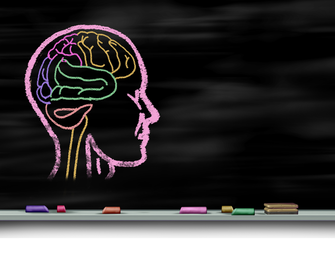|
By: Ella Smith, AmeriCorps State & National Member Trigger Warming: Mental Health and Suicide The day-to-day lives of youth experiencing homelessness are stressful, plagued with inconsistency and often deeply traumatic. These factors inevitably take an immense toll on a child's mental health. Studies have concluded that homelessness itself can trigger a mental illness or worsen an already existing condition, even disregarding other factors such as poverty, serious medical conditions, social isolation and or other internal/external issues at play. Overall, those experiencing homelessness tend to have poorer mental health and higher prevalence of wellness issues than the general population due to living in a constant state of survival mode. With this, it becomes apparent just how prevalent the threat of depression and even suicide may become within this population. It can become easy to dismiss a young persons suicidal ideation as “childish behavior” or them “just wanting attention,” but it is crucial we treat these circumstances with the utmost care and compassion.
Among youth experiencing homelessness, the rates of depression are disproportionately high. More than 45% of youth experiencing homelessness struggle with depression, a rate 18 percentage points higher than their housed peers. Additionally, four out of five children who are experiencing homelessness have been exposed to at least one serious violent event by age 12, inevitably taking a tremendous toll on their mental health and cognitive functioning. In the United States, suicide has been found to be the leading cause of death in the homeless youth population with mortality rates due to suicide being 12 to 40 times higher than those in the housed population. A great deal of this has to do with factors typically at play before the child even realizes what’s happening to them. Some of these factors include, but are not limited to: unhealthy family relationships, neglect, poverty, life inconsistencies, physical, emotional, and sexual abuse, histories of domestic violence and lack of emotional support. With all these factors, and more, at play, it grows increasingly evident how youth experiencing homelessness are disproportionately affected by depression, anxiety, suicidal ideation, as well as other mental health issues. Though there is no single-handed solution to reduce the rates of suicide and depression among youth experiencing homelessness, it has become more and more urgent that we work to strengthen the systems that support our youth and coordinate policies which target mental health, housing, income, employment, and access to health care. Some protective factors associated with suicidality among children and adolescents experiencing homelessness are providing positive coping strategies, a supportive school environment, consistent and positive role models, and community/after school enrichment programs which provide our youth a greater sense of purpose and community. Organizations such as Covenant House provide youth experiencing homelessness, victims of trafficking, and runaway youth with services for mental and physical health, addiction treatment, workforce support, legal help, and more in order for them to advance their goals and achieve sustainable independence. Due to the disproportionately high rates of suicide within this specific population of youth, understanding the emotional, physical, and societal factors that contribute to suicidal thoughts and actions amongst them must be understood. By fully comprehending these causal factors, resources to provide positive long term outcomes for youth experiencing homelessness can be better structured and more efficiently dispersed to the populations most in need of them. Resources: If your child is in immediate danger of self-harm, please call 911. Suicide Hotline: 988 Suicide Prevention Resources: https://www.nationwidechildrens.org/specialties/behavioral-health/for-families/suicide-prevention-resources How to Talk to Children about Suicide—An Age-by-Age Guide: https://www.sprc.org/news/how-talk-children-about-suicide-age-age-guide References: Barnes, Andrew J, et al. “Emotional Health among Youth Experiencing Family Homelessness.” Pediatrics, U.S. National Library of Medicine, Apr. 2018, https://www.ncbi.nlm.nih.gov/pmc/articles/PMC5869340/. Bommersbach, Tanner J., et al. “Suicide Attempts and Homelessness: Timing of Attempts among Recently Homeless, Past Homeless, and Never Homeless Adults.” Psychiatric Services, 29 Sept. 2020, https://ps.psychiatryonline.org/doi/10.1176/appi.ps.202000073. Canadian Population Health Initiative of the Canadian Institute for Health Information. “Finding Home: Policy Options for Addressing Homelessness in Canada.” 2.3 Mental Health, Mental Illness, & Homelessness in Canada | The Homeless Hub, 2007, https://homelesshub.ca/resource/23-mental-health-mental-illness-homelessness-canada Gerke, Jane. “Health Outcomes for Youth Experiencing Homelessness.” Homeless Youth Connection, 4 Apr. 2022, https://hycaz.org/health-outcomes-for-youth-experiencing-homelessness/#:~:text=More%20than%2040%25%20of%20homeless,their%20housed%20peers%20(29%25). Razza, Timothy, and Yuri Flasch. “Suicidality in Homeless Children and Adolescents: A Systematic Review.” Science Direct, Pergamon, 11 Feb. 2021, https://www.sciencedirect.com/science/article/pii/S135917892100029X.
0 Comments
Leave a Reply. |
BLogArchives
July 2024
Categories |
©2022 Chicago HOPES for Kids. All Rights Reserved.
Website by Gumbo Media
Website by Gumbo Media


 RSS Feed
RSS Feed
